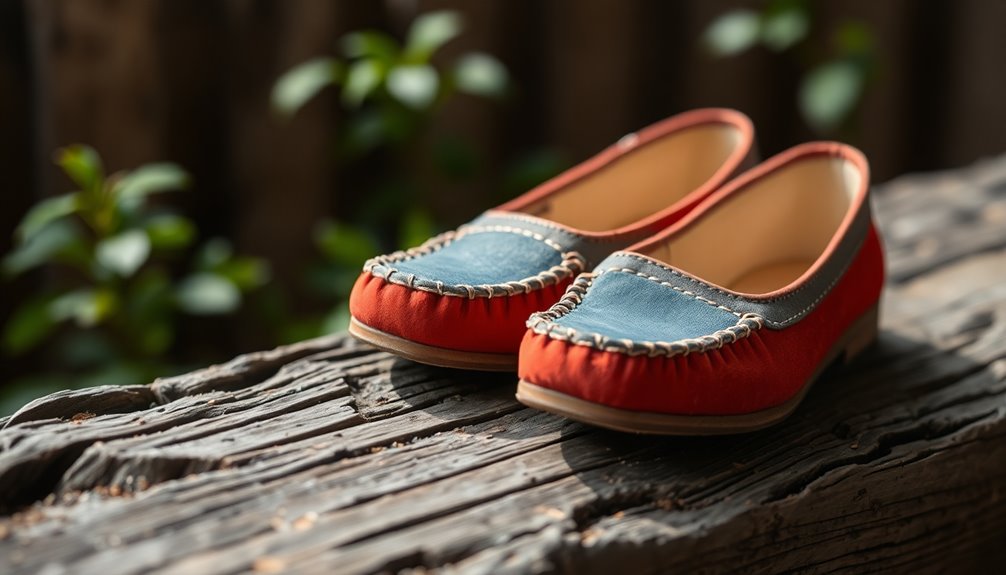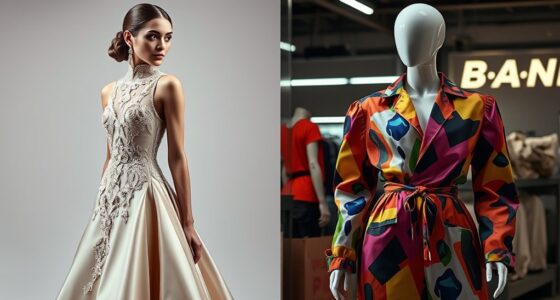If you're looking for shoe brands that don't support Israel and align with ethical fashion, consider options like Veja and Ethletic. These brands emphasize sustainability and fair labor practices, making your purchase more impactful. They use eco-friendly materials and support workers' rights. You might also explore secondhand options through platforms like Oxfam or Depop to minimize your environmental footprint further. Supporting these brands not only feels good but also fosters social justice. Curious to learn about more ethical choices and how your shopping habits can make a difference? There's plenty more to discover!
Key Takeaways
- Consider brands like Veja and Ethletic, which emphasize sustainability and fair labor practices without ties to controversial political issues.
- Opt for secondhand shoes from platforms like Depop and Oxfam to minimize environmental impact and avoid supporting problematic brands.
- Explore local independent businesses that prioritize ethical production and may not align with controversial political positions.
- Research ethical assessments of brands through resources like Ethical Consumer to identify those that align with your values.
- Support brands like FC Palestina and PALI ROOTS, which donate profits to Palestinian initiatives while promoting cultural identity and social justice.
Overview of Ethical Footwear
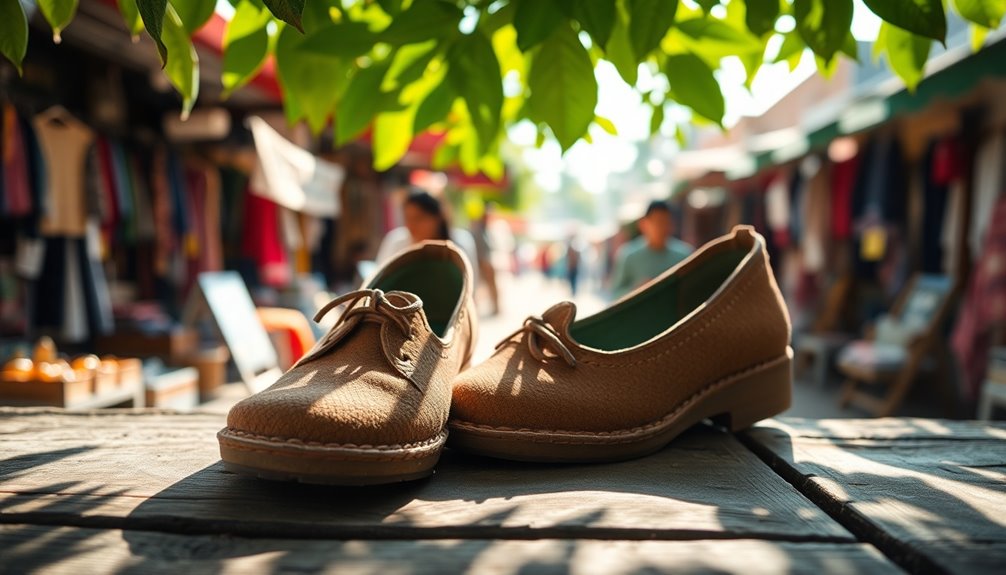
Ethical footwear brands consistently prioritize sustainability and fair labor practices in their production processes. Companies like Veja and Ethletic lead the way by emphasizing sustainable materials and ensuring worker rights through Fairtrade certification.
When you choose ethical footwear, you're not just investing in a product; you're supporting fair wages and safe working conditions for the people who make your shoes.
Many brands focus on creating trainers that are easily repairable, reducing waste in the fashion industry. For instance, Hylo and Vivobarefoot promote repair and recycling, allowing you to extend the life of your footwear.
This commitment to ethical production helps you make a positive impact on the environment.
Moreover, platforms like Oxfam and Preworn offer you the chance to shop secondhand, further minimizing your environmental footprint while still finding stylish ethical footwear.
By opting for brands that prioritize sustainable materials and worker rights, you're contributing to a movement that values both people and the planet.
In doing so, you're not only making a fashion statement but also supporting a more responsible and ethical approach to footwear.
Brands Actively Boycotted

Consumer sentiment has shifted dramatically, leading to boycotts against major shoe brands like Nike and Adidas due to their perceived support for Israel.
These boycotted brands are under fire, especially Adidas, which faced backlash after associating with model Bella Hadid, who's Palestinian heritage. The movement against these brands reflects a growing commitment to ethical consumerism, as 99% of respondents in polls indicate they avoid brands linked to Israeli actions.
Even high-end luxury brands like Chanel and Louis Vuitton aren't off the hook. Their financial support to Israel has sparked scrutiny and potential boycotts, particularly among younger consumers who value both human rights and animal rights.
As boycotts evolve into sustained movements, brands are reevaluating their positions to retain market share.
Social media plays a pivotal role in these boycotts, enabling rapid mobilization against brands perceived as unethical. For instance, when Dior made controversial statements, the swift consumer response showcased the power of collective action.
As you navigate your purchasing decisions, consider the impact of your choices on these actively boycotted brands and how they align with your values.
Ethical Alternatives to Popular Brands
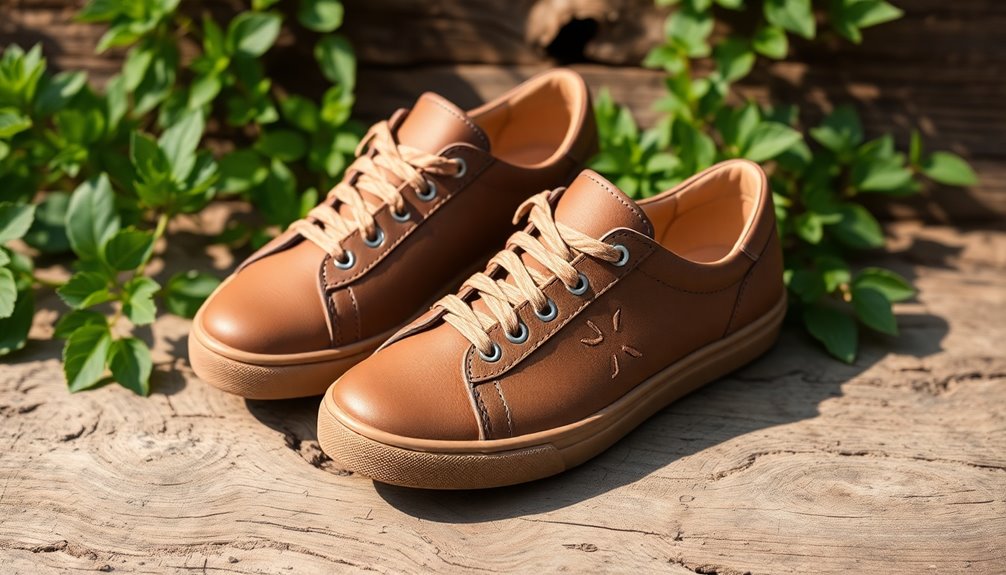
With a growing awareness of social and environmental issues, many shoppers are now exploring ethical alternatives to popular brands like Nike and Adidas. You might consider brands like Veja and Ethletic, which prioritize workers' rights and sustainable materials. These brands offer footwear that aligns with your values, ensuring you're making a responsible choice.
If you're looking for eco-friendly options, check out secondhand and refurbished trainers on platforms like Depop and Oxfam. This not only minimizes waste but also helps you avoid supporting brands linked to unethical practices.
Additionally, brands like Hylo and Vivobarefoot focus on the circular economy, providing repair services and fully recyclable products, which promotes longevity in your footwear. By choosing these brands, you can also benefit from their commitment to secure payment processing, enhancing your shopping experience.
Supporting local independent businesses or community-led initiatives can also yield ethical fashion choices. These alternatives champion social justice and solidarity, allowing you to feel good about your purchases.
Social media can be a valuable resource for discovering these brands offering ethical alternatives that resonate with your commitment to human rights. By making conscious choices, you can contribute to a fashion landscape that values both people and the planet.
Impact of Consumer Choices
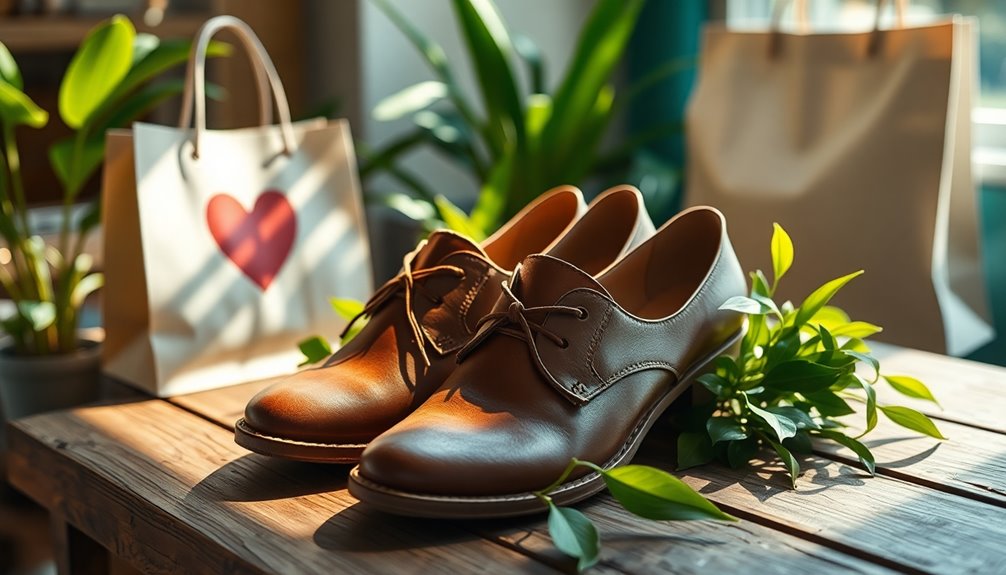
As you navigate the world of fashion, your choices can greatly influence brands and their practices. Consumer boycotts are on the rise, with 99% of people avoiding brands linked to Israel. This shift shows that you're prioritizing ethical fashion choices more than ever. When you choose wisely, you contribute to a significant change in the market.
Consider these points:
- High-end brands like Chanel and Louis Vuitton face backlash for their financial ties to controversial issues.
- Younger shoppers, particularly millennials and Gen Z, demand transparency and ethical practices from brands.
- The best way to make a statement is to find alternatives that align with your values.
- The increasing popularity of second-hand shopping reflects a desire for sustainable fashion.
- Brands that ignore consumer pressure risk losing market share and may have to reevaluate their policies.
Supporting Palestinian Causes

Supporting Palestinian causes through fashion not only promotes cultural identity but also fosters a sense of community and solidarity. When you choose to shop ethically, you're not just making a purchase; you're actively supporting brands that stand for justice and cultural representation.
For instance, FC Palestina offers football shirts that celebrate Palestinian pride, donating at least 20% of profits to support Palestinian causes. Similarly, PALI ROOTS showcases Palestinian culture through clothing and runs a meal program to enhance food security in local communities.
If you're looking for modest swimwear, consider LYRA, which donates a portion of its proceeds to Palestinian charities. Streetwear aficionados can turn to HYPEPEACE, a brand that uses fashion to advocate for solidarity and justice.
These brands exemplify how ethical fashion can intersect with supporting Palestinian causes.
To navigate this space, check out a shopping guide that highlights these impactful brands. You'll discover various options, including vegetarian shoes, all aimed at making a positive difference.
Resources for Ethical Shopping
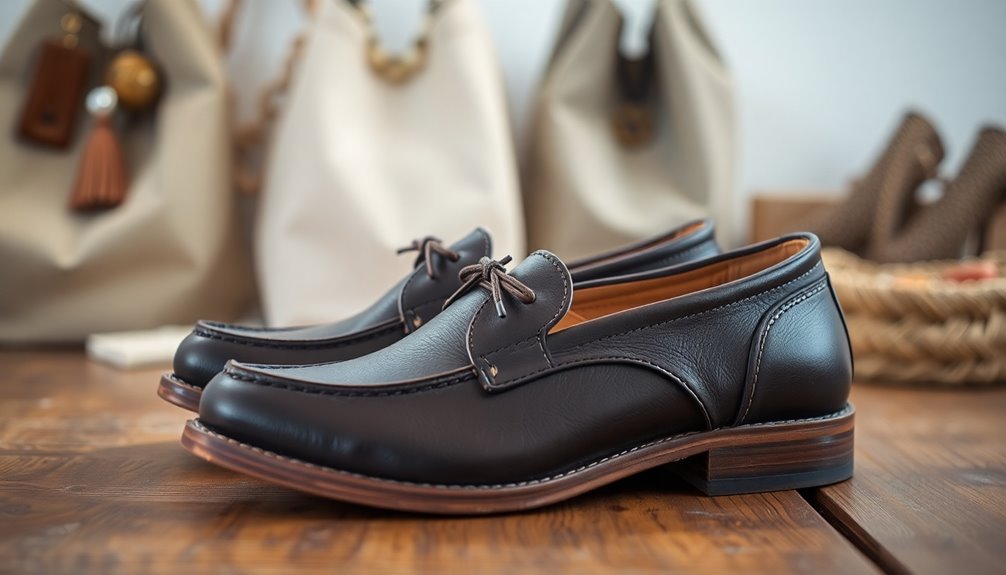
Steering through the world of ethical shopping can feel overwhelming, but there are plenty of resources available to help you make informed choices.
As an ethical consumer, you can support brands that align with your values while avoiding those linked to controversial practices. Here are some resources to guide your shopping:
- Ethical Consumer: Use their subscription service for detailed assessments of brands and their ethical practices.
- Secondhand Shopping: Explore platforms like Oxfam and Depop to find quality shoes while minimizing environmental impact.
- Sustainable Materials: Check out brands like Hylo and Vivobarefoot, which create footwear from eco-friendly materials, reducing reliance on harmful resources.
- Local Independent Businesses: Support community-led brands, such as FC Palestina, to promote social justice and celebrate cultural identity.
- Fair Trade Brands: Consider brands like Veja and Ethletic that prioritize ethical practices and fair trade in their production processes.
Frequently Asked Questions
What Sports Brand Doesn T Support Israel?
If you're looking for sports brands that don't support Israel, you've got a few options.
PUMA has distanced itself from direct involvement and is a popular choice.
New Balance hasn't made significant contributions to Israel, making it less controversial.
ASICS appeals to those concerned about ethical practices.
Nike, while it has controversies, hasn't explicitly supported Israel, so it's worth considering.
Just be sure to research each brand's values before making a decision.
Which Shoe Company Supports Palestine?
When it comes to supporting Palestine, you've got options that really hit the nail on the head.
Ethletic offers Fairtrade certified shoes, ensuring fair labor practices while promoting Palestinian causes.
Veja stands out for its sustainable practices and social responsibility.
PALI ROOTS showcases Palestinian culture through its footwear, while HYPEPEACE uses fashion for social justice.
Don't forget FC Palestina, whose shoes help fund Palestinian initiatives.
You can step forward with purpose!
Which Shoe Brands Are Israeli?
If you're curious about Israeli shoe brands, you might want to check out Teva and Naot.
Teva, known for its outdoor sandals, originated in the U.S. but is now owned by an Israeli company.
Naot specializes in comfortable footwear and proudly manufactures its products in Israel, supporting the local economy.
Both brands reflect a blend of comfort and practicality, making them popular choices for many looking for quality footwear.
What Shoe Company Is the Most Ethical?
Imagine strutting through a modern bazaar, where every step you take supports fairness.
When you're looking for the most ethical shoe company, Ethletic stands out with its perfect score of 100/100 for Fairtrade certified products. They prioritize fair wages for workers, ensuring your purchase contributes positively.
Other notable brands like Veja and Hylo also embrace sustainability, but Ethletic's commitment to ethical practices truly sets it apart in today's fashion landscape.
Conclusion
As you lace up your next pair of shoes, remember the power of your choices. Each step you take can echo your values, weaving a tapestry of support for ethical fashion and Palestinian causes. Imagine walking on a path paved with purpose, where every purchase reflects your commitment to justice. By choosing brands that align with your beliefs, you're not just making a statement; you're creating a movement. Let your feet dance to the rhythm of change!
